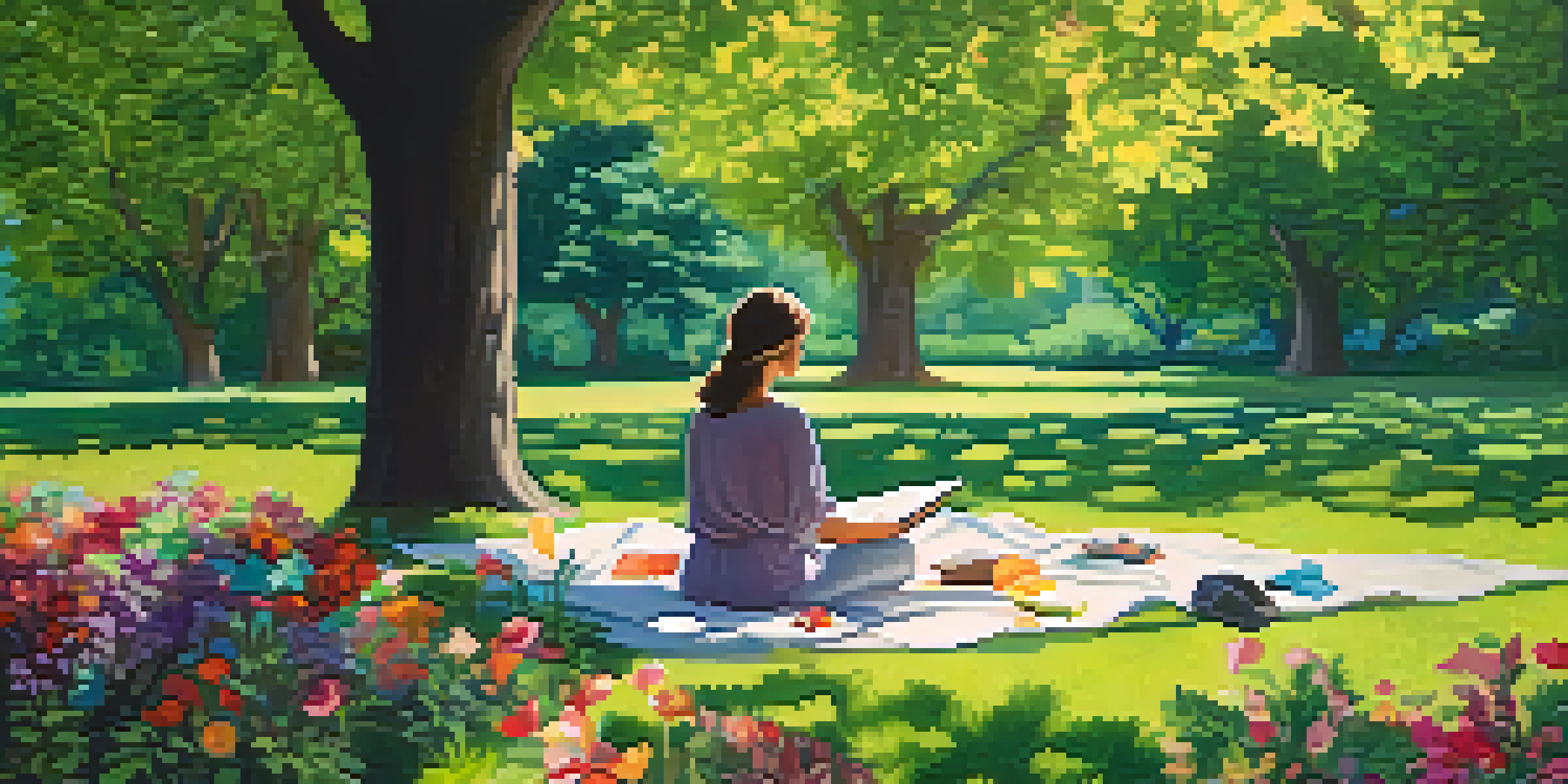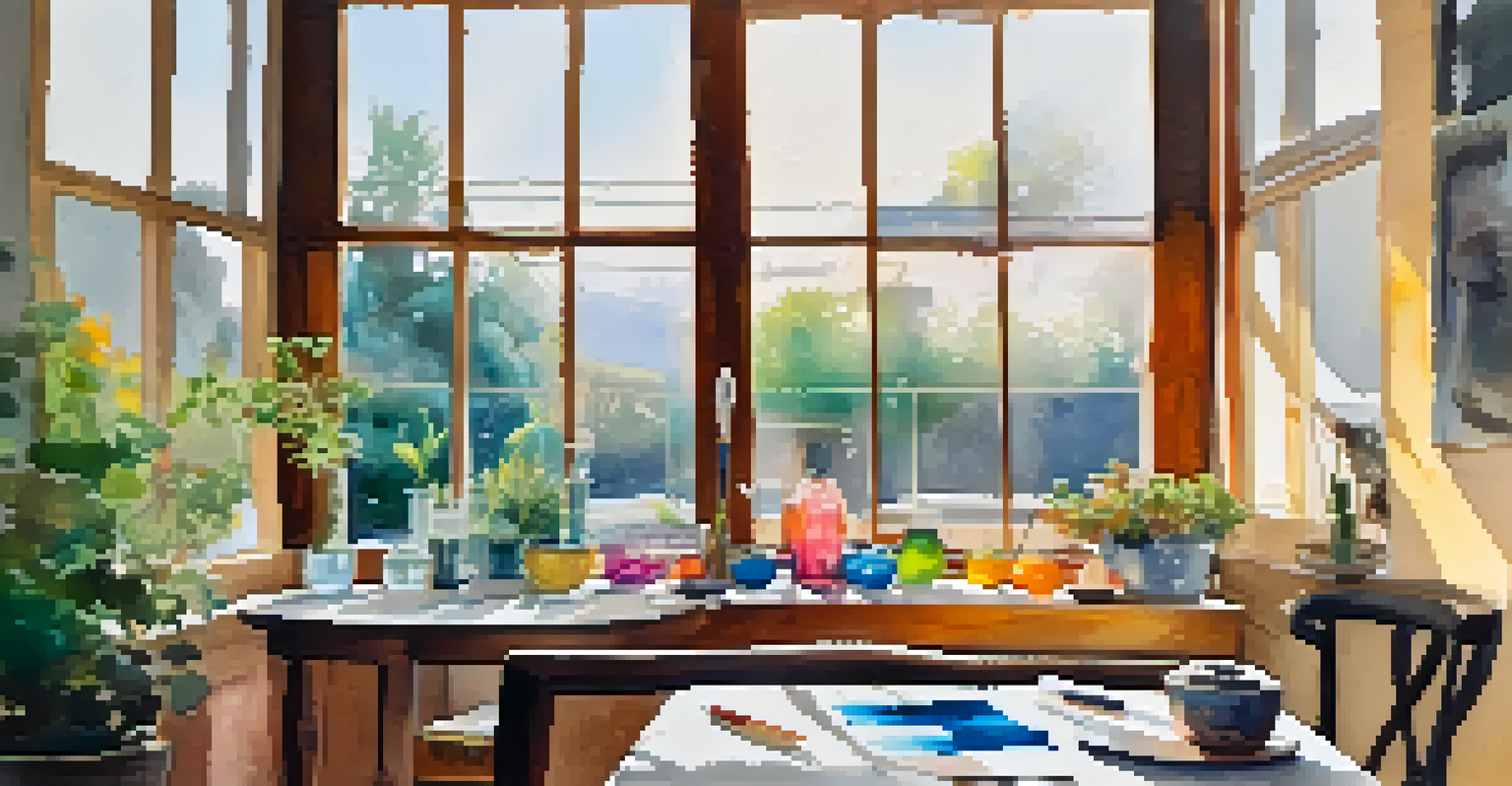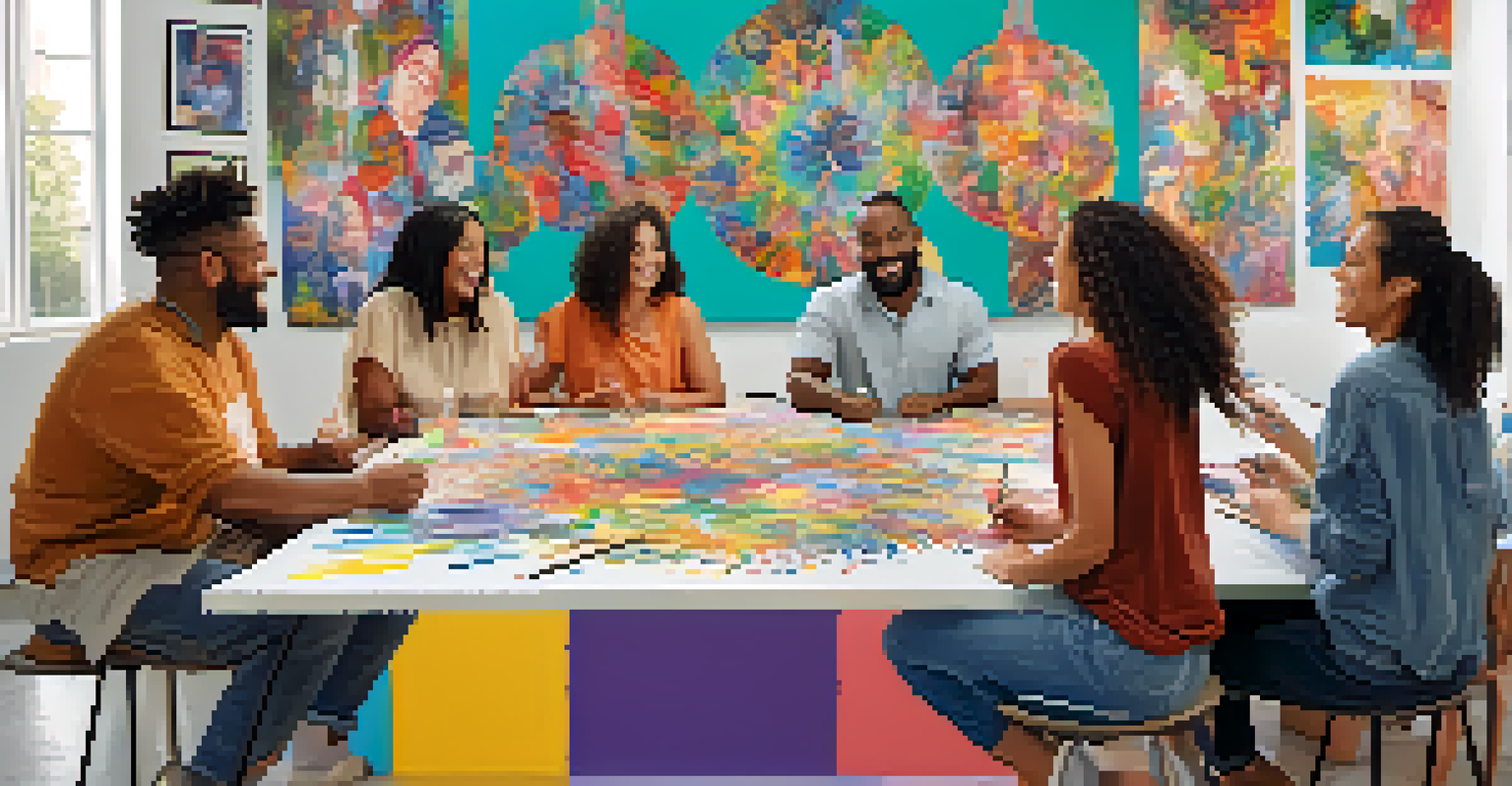Art Therapy Techniques for Enhancing Mental Well-Being

Understanding Art Therapy and Its Benefits
Art therapy combines creative expression with psychological healing. It provides a safe space for individuals to explore their emotions and experiences through various artistic mediums like painting, drawing, or sculpting. This therapeutic approach can reduce anxiety, improve mood, and foster self-awareness.
Art is not what you see, but what you make others see.
One of the key benefits of art therapy is its ability to bypass the barriers of verbal communication. For many, expressing feelings through words can be challenging, but art offers an alternative language. This can be especially helpful for those who have experienced trauma or struggle with traditional talk therapy.
Moreover, engaging in creative activities can stimulate the brain's reward system, leading to feelings of pleasure and accomplishment. Overall, art therapy not only promotes relaxation but also encourages personal growth and healing.
Getting Started with Simple Art Activities
You don't need to be a professional artist to benefit from art therapy. Simple activities like coloring in mandalas or doodling can be incredibly therapeutic. These activities allow for mindfulness, helping you focus on the present moment and reduce stress.

Consider setting aside a few minutes each day to engage in these simple art activities. Create a cozy space with your favorite supplies, whether it’s colored pencils, watercolors, or just plain paper. The act of creating can be meditative, allowing your mind to unwind and recharge.
Art Therapy Promotes Healing
Art therapy combines creative expression with psychological healing, helping individuals explore emotions and reduce anxiety.
Remember, the goal here is not to produce a masterpiece but to enjoy the process. Give yourself permission to create freely, embracing any mistakes as part of your artistic journey.
Using Journaling as a Creative Outlet
Journaling is another powerful art therapy technique that combines writing with creativity. By expressing your thoughts and feelings on paper, you can gain insights into your emotional state while also providing a creative outlet. This practice can be particularly beneficial for processing difficult experiences.
The greatest respect an artist can pay to music is to be true to their own experience.
You might start with prompts like 'What makes me happy?' or 'What do I wish for?' This can lead to deeper explorations of your inner world. Incorporating doodles, sketches, or even collaging images from magazines can further enhance the experience.
Regular journaling can help track your emotional progress and serve as a valuable tool for reflection. Over time, you’ll likely notice patterns or themes in your writing, providing clarity and understanding.
Exploring Nature Through Nature Art Therapy
Nature art therapy takes the creative process outdoors, allowing you to connect with nature while expressing yourself artistically. Collecting leaves, stones, or flowers can inspire unique creations, like nature collages or sculptures. This technique emphasizes the healing power of nature alongside artistic expression.
Spending time in natural settings has been shown to reduce stress and improve overall mental well-being. As you engage in nature art therapy, you can find tranquility in the environment, further enhancing the therapeutic effects of your creations.
Simple Art Activities for All
Engaging in simple art activities, like coloring or doodling, can offer therapeutic benefits and promote mindfulness.
Whether you're creating a leaf print or building a small rock tower, the goal is to immerse yourself in the experience. This connection to nature can foster feelings of serenity and creativity.
Mindful Painting: Embracing the Process
Mindful painting is an art therapy technique that encourages you to focus on the act of painting rather than the final product. This approach promotes relaxation and can help clear your mind of distractions. Using simple materials like watercolors or acrylics, you can express your emotions freely.
Begin by choosing colors that resonate with your current mood. Allow yourself to paint without judgment or expectations. The process itself becomes a form of meditation, helping you to explore your feelings in a non-verbal way.
This technique not only enhances mental well-being but also fosters creativity and self-expression. Many find that letting go of perfectionism leads to a more fulfilling and enjoyable creative experience.
Group Art Therapy: Building Community Connections
Group art therapy offers a wonderful opportunity to connect with others while exploring creativity. Engaging in art-making with peers can foster a sense of belonging and support, which is essential for mental health. Sharing your experiences through art can break isolation and build community.
These group sessions often encourage collaboration and dialogue, allowing participants to learn from one another. You might find inspiration in someone else's work or feel motivated to express shared emotions through your art.
Connect with Nature Art Therapy
Nature art therapy allows individuals to express themselves creatively while enjoying the calming effects of the natural environment.
Additionally, group art therapy can provide a safe space for vulnerability. Participants can share their stories, fostering empathy and understanding while enhancing individual and collective healing.
Incorporating Art into Daily Life for Well-Being
Incorporating art into your daily routine can significantly enhance your mental well-being. This doesn’t mean you need to set aside hours for creating; even small moments of artistic expression can be beneficial. Try doodling during a break or painting while listening to music.
Consider setting a creative intention for your day, such as 'I will express gratitude through art today.' This can shift your mindset and encourage you to look for opportunities to create, even in mundane moments.

Over time, you'll likely find that these small artistic practices contribute to a greater sense of joy and fulfillment in your life. It's about making creativity a regular part of your existence, which can be incredibly rewarding.
Finding a Qualified Art Therapist
If you're interested in exploring art therapy more deeply, finding a qualified art therapist can be a great step. These professionals are trained to guide you through the therapeutic process, helping you navigate your emotions and experiences through art. Look for therapists who have certifications in art therapy and a background in psychology.
You can start your search by asking for recommendations from mental health professionals or searching online directories. Many therapists offer initial consultations, allowing you to find someone who resonates with you and your needs.
Working with a qualified art therapist can provide you with tailored techniques and support, ensuring that your artistic journey serves your mental well-being effectively.